The best place to travel in 2024 spans lesser-known locations, natural wonders, and vibrant cities. The year marks a continued push for more authentic, flexible experiences, with the best travel destination of 2024 catering to a variety of needs and interests. Destinations such as the islands of Sumba and Culebra are largely untouched by mass overdevelopment. Urban locations like Tainan, Saint John, and Tartu have distinctive identities that convey cultural sentiment and heritage rather than tourist trappings. Meanwhile, larger regions like Northwest Michigan encourage outdoor activities and enjoying nature’s beauties.

Travel in 2024 re-opens the door toward self-exploration. Traveling is one of the best ways to develop as an individual as well as indulge in personal interests. This is especially true as the industry moves toward stabilized growth and flexible options. Trends and prices are likely to fluctuate, but the appeal of prime picks is unmistakable. They represent opportunities for positive experiences if you’re seeking lesser-known historical, gastronomic, cultural, or natural wonders.
Below is a breakdown of these experiences and why they’re the best places to go in 2024.
- Sumba, Indonesia: Sumba, Indonesia is known for its untouched landscapes, highlighting ecotourism and sustainable hospitality. It offers unique attractions like the Pasola festival, as well as lush hikes, surfing, and pristine beaches for outdoorsy travelers.
- Tartu, Estonia: Tartu is the country’s intellectual center and caters to curious tourists. It features various cultural and historical attractions, acting as a gateway to Estonian culture. For instance, you’ll find locations like the Estonian National Museum and the open-air market in the Old Town to indulge in.
- Tainan, Taiwan: Tainan, Taiwan blends rich heritage with vibrant urban life. Attractions include Chihkan Tower, Anping Fort, and Tainan Park, plus events like the Yanshui Fireworks Festival and the Taiwan International Orchid Show. The city is an ideal spot if you’re seeking a destination that displays a modern yet folk identity.
- Northwest Michigan, USA: Northwest Michigan attracts outdoorsy travelers due to its many natural beauties. Popular sites include Sleeping Bear Dunes, Pictured Rocks, and Lake Michigan. Additionally, Traverse City, its cultural hub, offers urban festivities, making the region a top 2024 destination.
- Culebra, Puerto Rico: Culebra, Puerto Rico features unspoiled natural beauty, as well as a blend of Spanish and Caribbean influences seen in local music and food. One of its top attractions, Flamenco Beach, offers aquatic activities for more outdoorsy tourists.
- Trans Dinarica Cycle Route, Balkans: The Trans Dinarica is a travel opportunity for cyclists. It’s a 1,200-mile-long route across the Balkans, touching countries such as Slovenia, Croatia, Serbia, and North Macedonia. This trail allows you to experience different cultures and landscapes first-hand, with the unique challenge of cycling.
- Saint John, New Brunswick, Canada: Saint John is a city located on the Bay of Fundy. It conveys a maritime heritage as well as distinct natural attractions like the Reversing Falls and Irving Nature Park. Other nearby attractions like Loch Alva Wilderness Area make it a prime 2024 destination if you’re seeking coastal beauty and cultural depth.
- Albania: Albania is a Southeast European country with stunning landscapes and centuries-old history and culture. There are many sites to visit if you’re a traveler interested in diverse experiences, including the Albanian Riviera’s clear waters and UNESCO sites like Butrint and Gjirokastër.
- Galicia, Spain: Galicia, Spain is an autonomous region with a distinct culture. It’s particularly famous for its coastline, boasting locations like Cape Finisterre and Praia Das Catedrais. Galician cuisine, celebrated for its seafood and wines, is a major draw for international foodies.
- Mérida, Mexico: Mérida represents the cultural heart of the Yucatán Peninsula. One of its most distinctive draws is the city’s mixture of Mayan and colonial Spanish influences. Other key attractions feature the historic Cathedral of Mérida, Paseo de Montejo, and the vibrant Mérida en Domingo events. The nearby Celestún Biosphere Reserve also offers nature lovers a chance to enjoy local wildlife.
The article below expands on these locations in-depth, highlighting major attractions, budget, and scheduling considerations. We’ll additionally go over practical tips for travel, including why 2024 is such a great year for a vacation and the benefits of going on a trip.
1. Sumba, Indonesia
Sumba, Indonesia is part of the Lesser Sunda Islands and the home ground of the Sumbese culture. The island is known for its peaked-roof houses and ancestral worship–but its main allure is its unblemished terrain, with Sumba being largely unaffected by mass tourism development. As a result, eco-tourism and sustainable hospitality have gained prominence on the island, making it a top location for 2024 travel.
View in gallery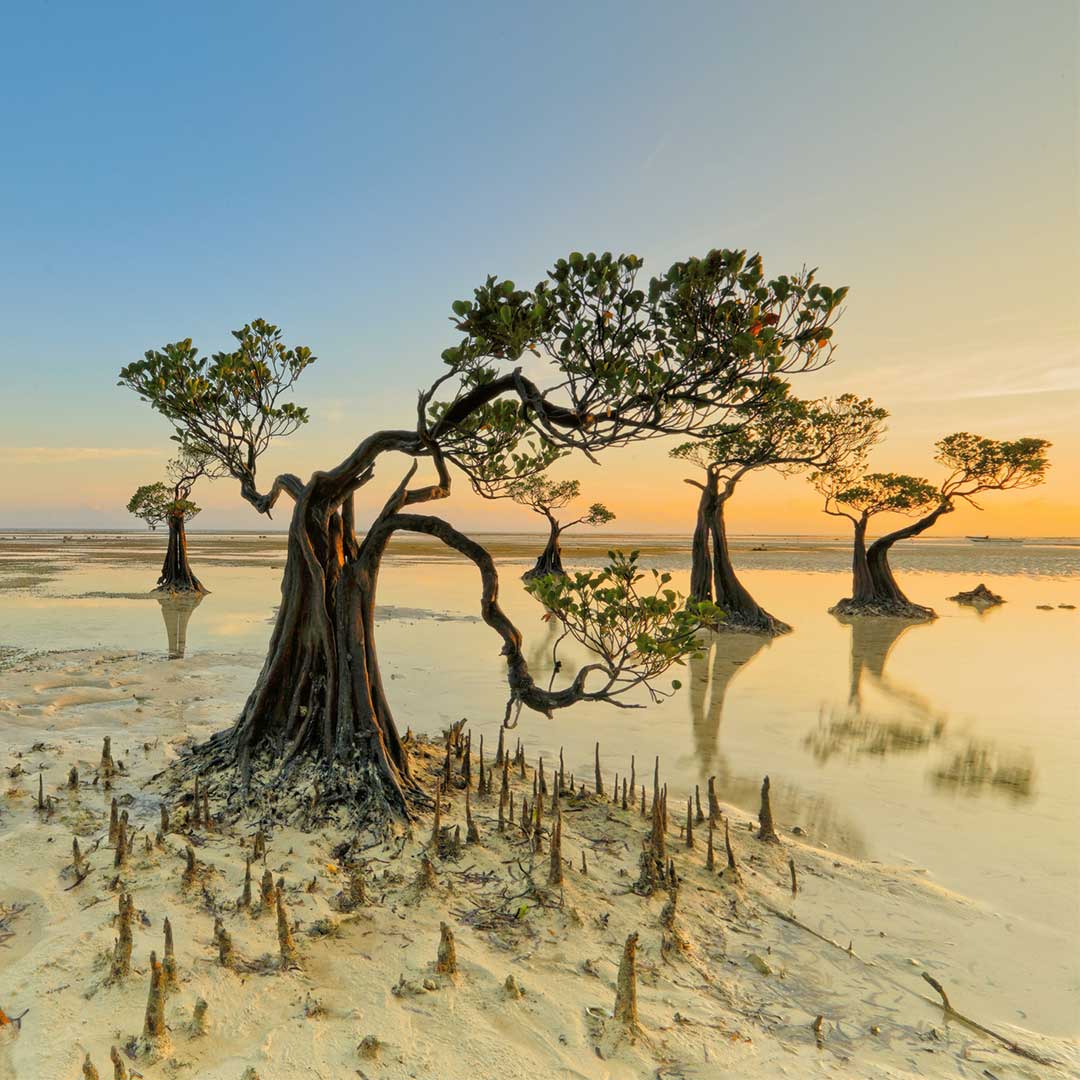
Culturally, the people of Sumba are connected to their land. Visitors see this represented in ancestral worship, bamboo architecture, and noteworthy events like the Pasola, which involves horseback riding, mock battles, and kickstarting celebrations according to the arrival of sea worms. Other attractions center on enjoying the landscape, including lush hiking scenes, surfing trips, and pristine beaches. You may also use Sumba as an off-shoot to visit the nearby Komodo Island or Bali. The former offers Komodo dragons and pink-sand beaches, while the latter is Indonesia’s most famous travel location and provides many activities.
The best time to visit Sumba is during the dry season from May to November, whereas the worst time is during the peak wet season. We recommend staying for a week to ten days for a comprehensive experience of Sumba’s natural and cultural treasures. That said, be mindful of your budget. Sumba doesn’t have as many accommodations as popular spots like Bali. Spending may vary from $70 to $115 per day but expect higher expenses if you choose to stay at one of the island’s higher-end, all-inclusive resorts. Transportation is somewhat limited due to fluctuating infrastructure across the island. You’ll likely travel via motorcycle taxis (called ojeks), buses, car rentals, and guided tours.
2. Tartu, Estonia
Tartu, Estonia is the country’s second-largest city and its intellectual hub. It is a prominent fixture of Estonia’s educational pursuits, being characterized as a university city. As a result, the city’s attractions cater to young adults and intellectually curious tourists. There’s a prominent nightlife scene as well as classical architecture to enjoy. The city’s culture comprises students, academics, and artists, with an underlying bohemian atmosphere conveyed through vibrant street art and a thriving restaurant scene.
View in gallery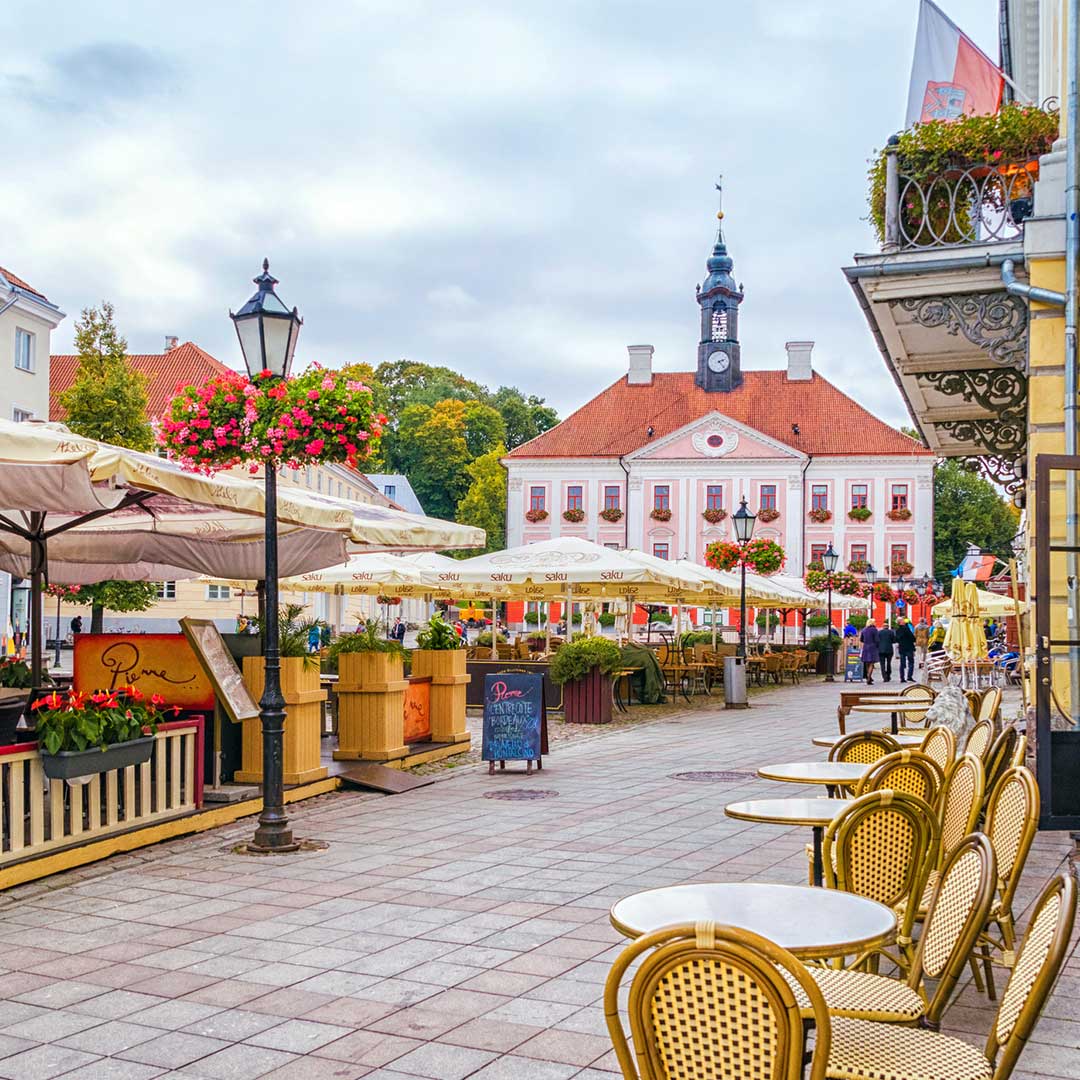
The main reasons to visit Tartu include exploring its heritage, scenery, and various festivals and events. For example, Tartu’s museums are acclaimed tourist stops. The city houses the Estonian National Museum, which serves as a testament to the cultural identity of Estonia. The well-preserved Old Town captures classical Estonian architecture and includes a popular open-air market. The city also runs an annual running event, the Tartu Sügisjooks, while the Emajõgi River offers scenic walks and medieval boat rides. Additionally, Tartu serves as a starting point for exploring nearby areas, such as Lake Peipsi or the historic town of Viljandi (the latter offers a glimpse into authentic Estonian culture).
The best time to visit Tartu is during the summer months from June to August when the city is lively, and the weather is warm enough for outdoor exploration. Conversely, the winter months are less ideal. They average between 24°F and 28°F with shorter days that limit outdoor activities. A three to five-day trip is optimal but we suggest extending your trip to a week if you’re interested in a guided tour or intend to visit Tartu’s neighboring attractions. Monetarily, Tartu is a European city which means it’s pricier than some of the other locations on our list. Expect to spend an average of $114 per day. Budget hostels help lower this rate, while transportation is less costly due to the compactness of the city. The most convenient and cheapest way to get around is a bicycle, while buses are ideal for lengthier travel.
3. Tainan, Taiwan
Tainan, Taiwan is a southern city with a rich heritage and vibrant architecture. Tainan’s history is robust as it’s the country’s oldest city and former capital. Visitors encounter a centuries-old culture combined with an urban infrastructure that accommodates markets, art spaces, museums, restaurants, and folk elements. This folk identity is apparent in local practices, which are deeply rooted in Chinese traditions, as well as the range of temples present in the city. Natives of the city are primarily of Han Chinese descent, and practice a blend of Buddhism, Taoism, and Confucianism.
View in gallery
Tainan is one of the best places to visit in 2024 because its list of attractions highlights its unique, modern yet historical folk identity. For example, architectural landmarks like the Chihkan Tower and Anping Fort offer insights into Taiwan’s colonial history. Meanwhile, Tainan Park is an important cultural fixture and the city center displays various historic monuments. Major events additionally attract visitors, such as the Yanshui Fireworks Festival or the Taiwan International Orchid Show. They respectively consist of spectacular pyrotechnic displays and a world-famous orchid exhibition. Furthermore, Tainan is approximately two hours away from other noteworthy locations, namely the Alishan National Scenic Area which offers you a mountain landscape and tea plantations to explore.
The ideal time to visit Tainan is from November to December due to drier, cooler winters. Conversely, the worst time to visit is summer, which spans from June and cools down in October and features intense heat and heavy rains. Generally, a three-to-four-day stay is a suitable time frame to visit Tainan’s key attractions, though a week is best if you want to immerse yourself fully. Expect spending to vary from as low as $50 a day to over $115 or more if you opt for more luxurious accommodations and transport. The latter is streamlined, the city being easily navigable by bicycles, taxis, or local buses, though trams and trains are available for extensive travel.
4. Northwest Michigan, USA
Northwest Michigan, USA is a region of pristine, natural beauties that often attract outdoor enthusiasts. Popular sites include Sleeping Bear Dunes National Lakeshore, Pictured Rocks National Lakeshore, and Lake Michigan, one of the Great Lakes. Culturally, Michigan demonstrates a mixture of Scandinavian heritage, indigenous Anishinaabe roots, and long-standing agricultural and artisanal practices. Each major location offers a distinct experience, from hiking and water sports to exploring local culture and history.
View in gallery
A trip to Northwest Michigan deepens your outdoor sense of adventure. Major features like Sleeping Bear Dunes offer breathtaking landscapes and activities such as hiking, kayaking, and dune climbing. Meanwhile, the nearby Mackinac Island houses well-preserved historic sites as well as scenic bike rides and waterfront views. Pictured Rocks National Lakeshore is known for its cliff faces, clear waters, and a myriad of outdoor activities. Urban stops like Traverse City serve as the cultural hub of the region, offering festivals, museums, and galleries for you to explore. You may also visit Lake Michigan which provides opportunities for water sports and boat trips.
We recommend planning a trip to Northwest Michigan in the early fall due to the autumnal scenery, enhancing the various outdoor attractions. We additionally recommend a week-long stay to take in the vastness of the region. Budget-wise, visitors should plan for a range of $150 to $250 per day to cover accommodations, dining, and activities, with costs varying by location and preferences. Transportation within Northwest Michigan is best navigated by car, offering the flexibility to explore the scenic routes at your own pace.
5. Culebra, Puerto Rico
Culebra, Puerto Rico is a small island that lies east of the mainland. It is a hotspot for 2024 travel because it offers white beaches, oceanic activities, and a serene locale to deepen your naturalistic side. The island is similar to the previously discussed Sumba, Indonesia because it retains much of its natural beauty, even being home to the Culebra National Wildlife Refuge. The island’s culture reflects a blend of Spanish and Caribbean influences, visible in its music, food, and local festivals. Meanwhile, its residents are warm and demonstrate a strong connection to the oceanic landscape and Catholic traditions.
View in gallery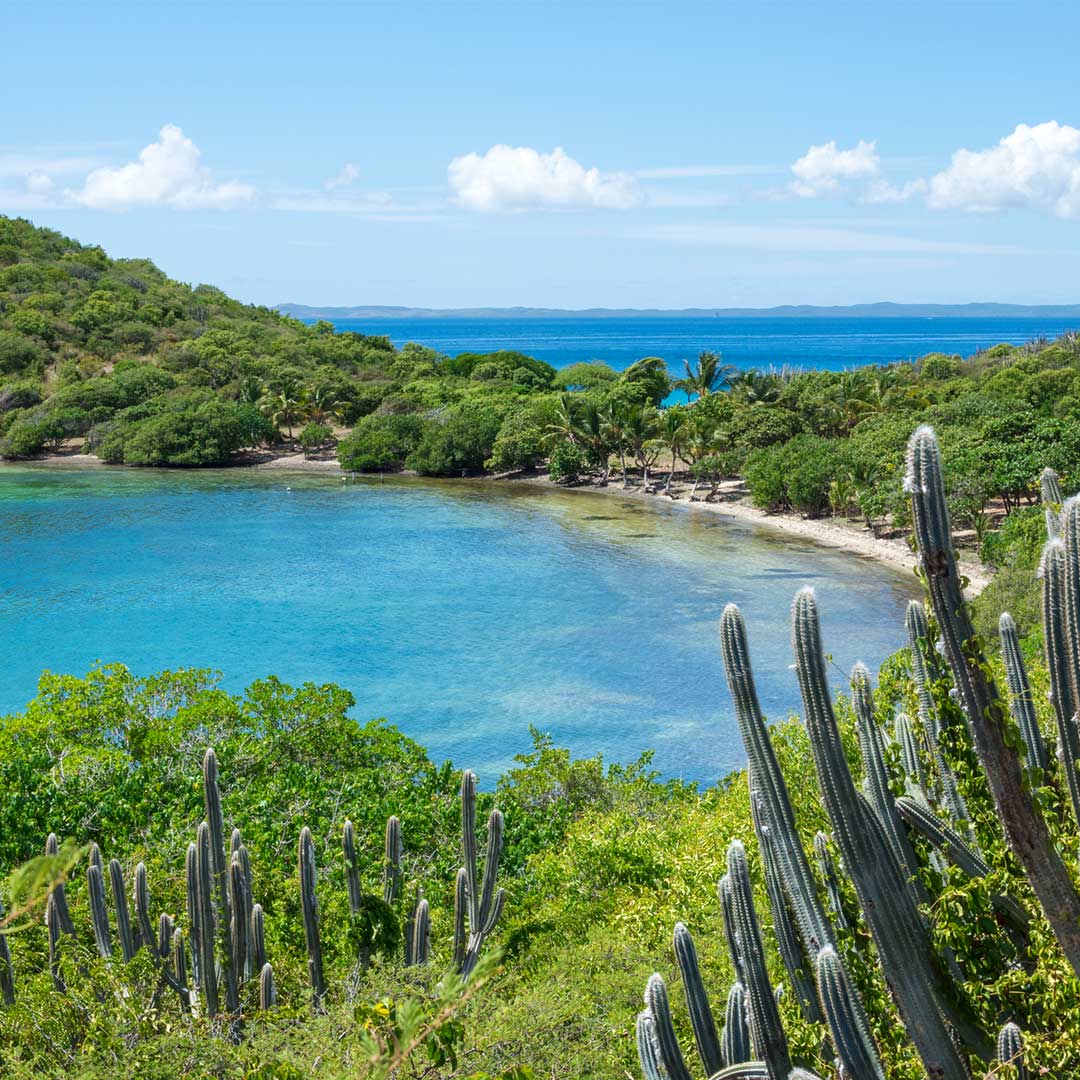
We recommend visiting Culebra if you’re a frequent beachgoer. For example, Flamenco Beach is acclaimed for its white sand, nearby green hills, and underwater activities. Snorkeling and diving are popular choices and attract both locals and tourists alike. The island additionally features over twenty cays for you to explore and provides opportunities to become better acquainted with nature, be it through hiking trails, sea turtle nesting sites, and bird sanctuaries. Traveling to Culebra is additionally a chance to stop by Vieques, another island. Vieques is known for its own wildlife refuge, as well as the bioluminescent Mosquito Bay and Fortín Conde de Mirasol. A trip duration of three to five days is ideal for experiencing Culebra’s main attractions, as well as making time for a short trip to Vieques.
We recommend visiting Culebra between December through March when the weather tends to be drier and cooler. Meanwhile, you should avoid travel during August and September due to extensive rain. Puerto Rico additionally experiences hurricanes during this period, which poses dangers for travel. Transportation on the island is facilitated through jeep rentals and golf carts, offering a fun way to explore the island. Budget at least $100 to $200 per day, and anticipate price spikes as this location becomes more popular.
6. Trans Dinarica Cycle Route, Balkans
The Trans Dinarica Cycle Route is a network of trails that spans the Balkans. It is a more niche travel location for 2024 due to its focus on bicyclists. The route runs over 1,200 miles across the Balkan Peninsula with potential for expansion—bridging Slovenia, Croatia, Bosnia and Herzegovina, Montenegro, Albania, Kosovo, Serbia, and North Macedonia. Bicyclists will appreciate the route best, but it’s also an opportunity for you to experience the Balkans’ diverse cultures and history. The communities along the Trans Dinarica are predominantly rural, maintaining traditional lifestyles. Visitors will encounter hospitality, an array of traditional cuisines, and various natural beauties.
View in gallery
The Trans Dinarica features rough pavement and dirt routes, which makes travel more challenging if you’re not an experienced cyclist. This challenge is one of the route’s biggest attractions, as you’ll encounter dense forests, mountain passes, and waterfronts. This makes for a unique way to broaden your global perspective and promotes extensive planning as you venture across countries. You’ll have a chance to visit Lake Ohrid in North Macedonia, which is known for its crystal-clear waters and historical significance. The route runs close to the Adriatic coast, particularly in the northern Croatian branch, which encourages you to visit coastal towns and partake in the cuisine.
The best time to embark on this cycling journey is in late spring or early autumn. The Balkans’ climate is mild during these seasons, offering optimal conditions for cycling. Avoid peak summer as heat exposure may prove dangerous, while winter prompts biting winds. Be sure to take precautions in general and rest often as the route isn’t targeted at beginner cyclists. Furthermore, expect to spend at least two weeks on the Trans Dinarica Cycle Route if you intend to visit local attractions. Budgeting varies according to the length of your stops and other accommodations. Expect to spend anywhere from $50 to $100 a day. Additionally, opt for local transportation such as buses and trains when cycling proves difficult or if you’d prefer to enjoy the Trans Dinarica in spurts.
7. Saint John, New Brunswick, Canada
Saint John, New Brunswick is a maritime city set against Canada’s rugged Atlantic coastline. The city is positioned along the Bay of Fundy, which features some of the world’s highest tides. Saint John boasts a rich history, as evidenced by its myriad of architectural styles, including Victorian, Queen Anne, and Romanesque. Culturally, Saint John thrives on a mixed maritime heritage, with festivals, museums, and waterfront activities, as well as a dedicated art scene. The locals are known to be warm, welcoming, and appreciative of music and theater.
View in gallery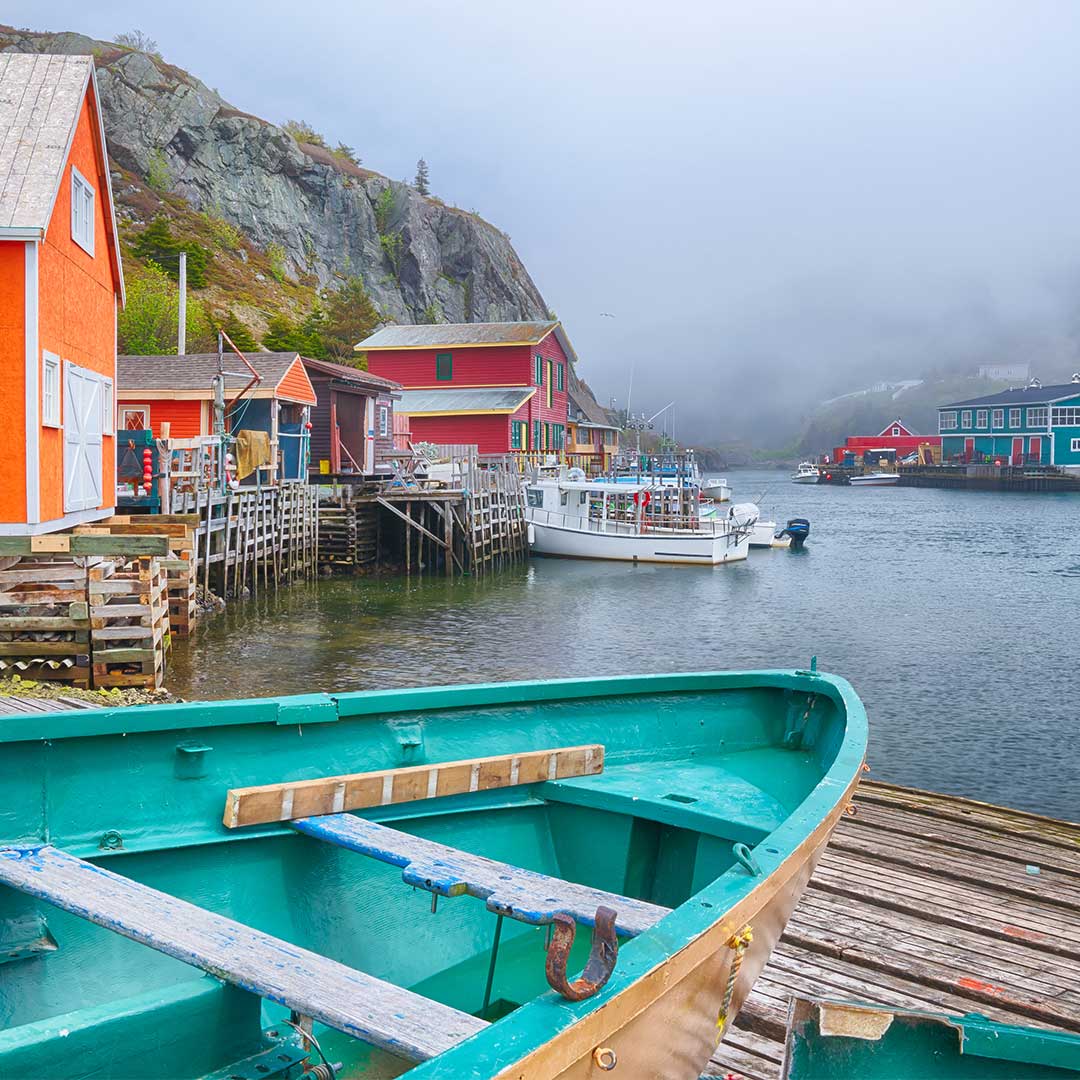
Saint John is an ideal travel spot if you enjoy a coastal backdrop, including the aforementioned Bay of Fundy. Other natural features include the Reversing Falls rapids, where the river runs backward at high tide, and the nearby Irving Nature Park, which offers trails and views of the coast. You’ll additionally have the chance to discover history and culture by touring historic landmarks and staples like the famous Saint John City Market. Not far from Saint John, you’ll find other attractions like Saint Andrews By-the-Sea, Loch Alva Wilderness Area, and river ferry rides.
We recommend visiting the city between April and May or September to October. The former offers cool spring weather, whereas the latter marks the end of summer and the start of autumn when crowds aren’t as dense. We suggest avoiding travel amid winter due to freezing temperatures, which may limit your outdoor activities. As this location centers on the cityscape, a stay of three to four days is sufficient time to enjoy Saint John’s art scene, history, and natural wonders. Your budget will vary, with daily expenses ranging from $45 a day to over $200 depending on accommodations, dining, and sightseeing. Transport is streamlined as the city is well-served by public transportation.
8. Albania
Albania is a country in Southeast Europe that features geographic wonders and a vibrant history and culture. Albania as a whole offers picturesque scenes due to its position between the Adriatic and Ionian Seas. The previously discussed Trans Dinarica Cycle Route passes through Albania, but we recommend a longer visit due to locations like the Albanian Riviera and the UNESCO World Heritage sites of Butrint and Gjirokastër. The country’s culture is ancient, spanning centuries of customs, cuisine, art, music, and literature. It additionally encompasses various ethnic groups, the predominant Albanian identity being rooted in Illyrian ancestry and Ottoman influences.
View in gallery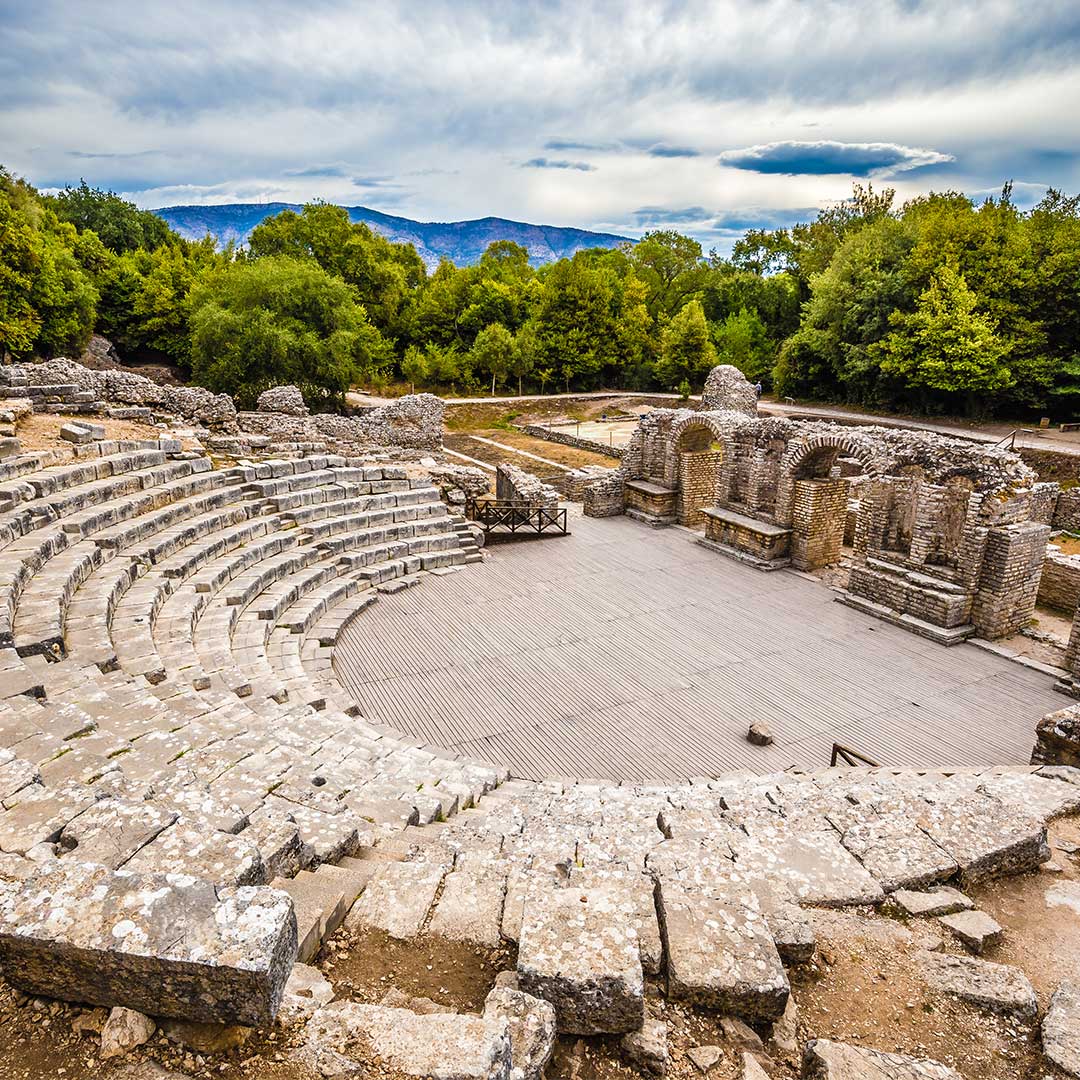
Visitors are drawn to Albania due to its natural and archaeological sites. For instance, the Albanian Riviera features clear waters, scenic villages and beaches, and the Llogara National Park. Meanwhile, Butrint is one of Southeast Europe’s most important archaeological sites, featuring Greek, Roman, Byzantine, Venetian, and Ottoman ruins. Meanwhile, urban locations like Gjirokastër exemplify Ottoman architecture. Due to the size of Albania, there are many sites to visit, though you may consider a day visit to Montenegro and Kosovo. Both enhance the Balkan experience through their respective cultures and histories.
The best time to visit Albania is from April to June and from September to October due to the milder weather. Conversely, the worst time to visit would be December to February as Albanian winters can drop to 32°F in more mountainous regions. Overall, however, Albania’s climate is relatively mild. Meanwhile, budgeting varies. More economical plans should anticipate $35 a day while higher-end spending averages $190. Transportation within Albania includes buses and furgons (shared vans) for intercity travel, with car rentals offering more flexibility for exploring remote areas.
9. Galicia, Spain
Galicia, Spain is an autonomous region of Spain that features a popular coastline, renowned cuisine, and a diverse heritage. The region’s status as an autonomous region means it demonstrates a culture distinct from the rest of Spain. For example, the Galician language is a mixture of local dialects, Spanish, and Portuguese, reflecting the area’s historical influences.
View in gallery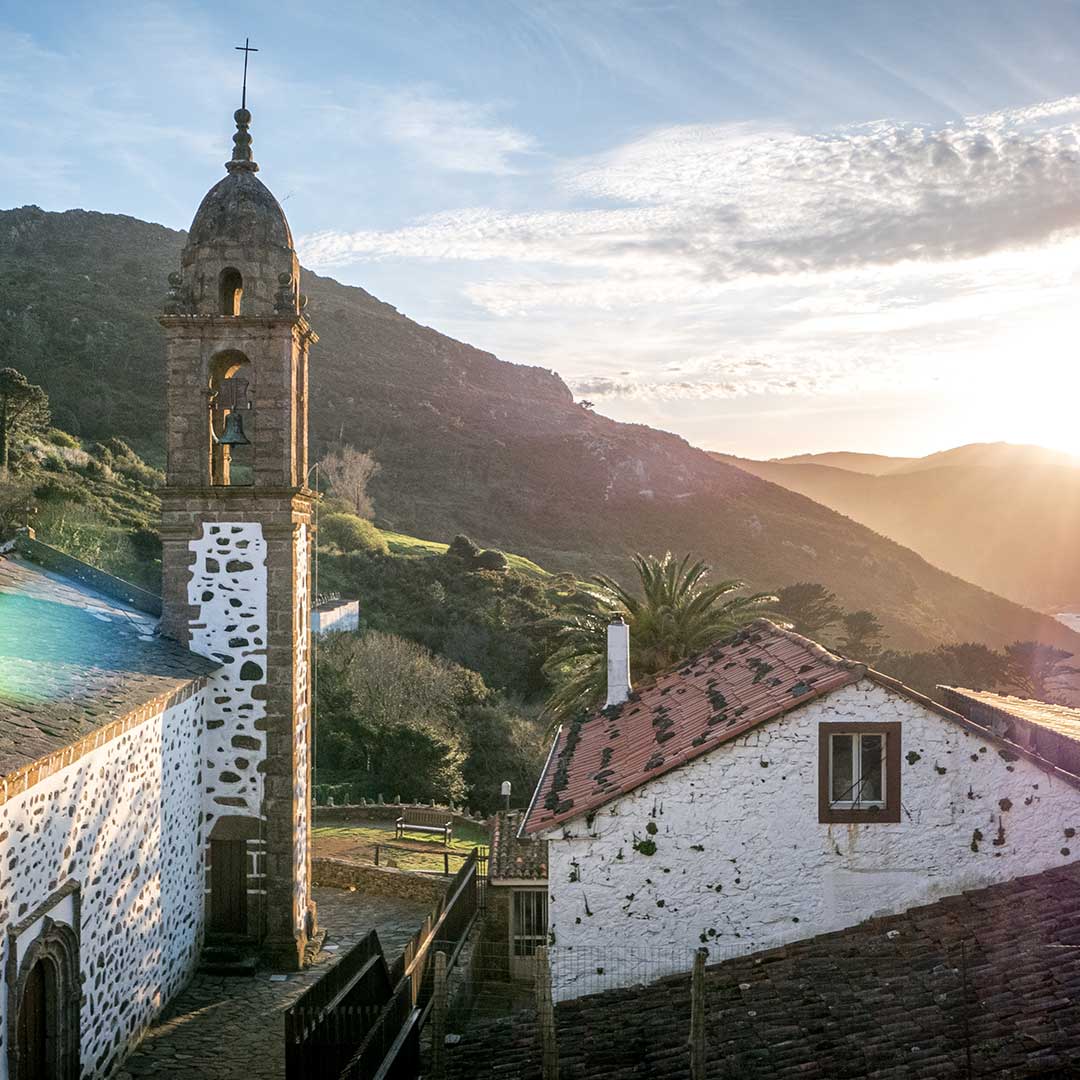
Meanwhile, the region’s attractions center on the coastline, with Cape Finisterre, Praia Das Catedrais, and the Cíes Islands being popular tourist spots. That said, we encourage you to stop by the city of Santiago and its cathedral to witness centuries-old culture and architecture. Galician cuisine also draws in crowds, emphasizing fresh seafood and local wines. Furthermore, the region spans the northwest Iberian Peninsula, with many areas to visit, including the neighboring autonomous community of Asturias. Asturias offers various natural parks, historical sites, and the city of Oviedo.
The best time to visit Galicia is during late spring, such as May, or early summer in September. The climate in Galicia is relatively mild, meaning there are no extremes to avoid. Its winters are wet and cold but rarely drop below freezing. We recommend visiting for at least one or two weeks to experience the entirety of Galicia. However, if you favor a lighter itinerary, we suggest concentrating several days in a specific area rather than the whole region. Expect to budget an average of $100 for daily expenses—though, spending less is possible if you opt for more inexpensive accommodations and transport. The latter is diverse, with buses and trains supporting travel between major attractions.
10. Mérida, Mexico
Mérida, Mexico is the cultural center of the Yucatán Peninsula. It makes for a popular travel location due to its vibrant architecture, which stems from a fusion of Mayan culture and Spanish colonial buildings. Mérida’s contemporary inclusions range from modern art galleries and boutique hotels to gourmet restaurants and lively festivals. The city’s culture reflects these aspects, emphasizing both the past and the present.
View in gallery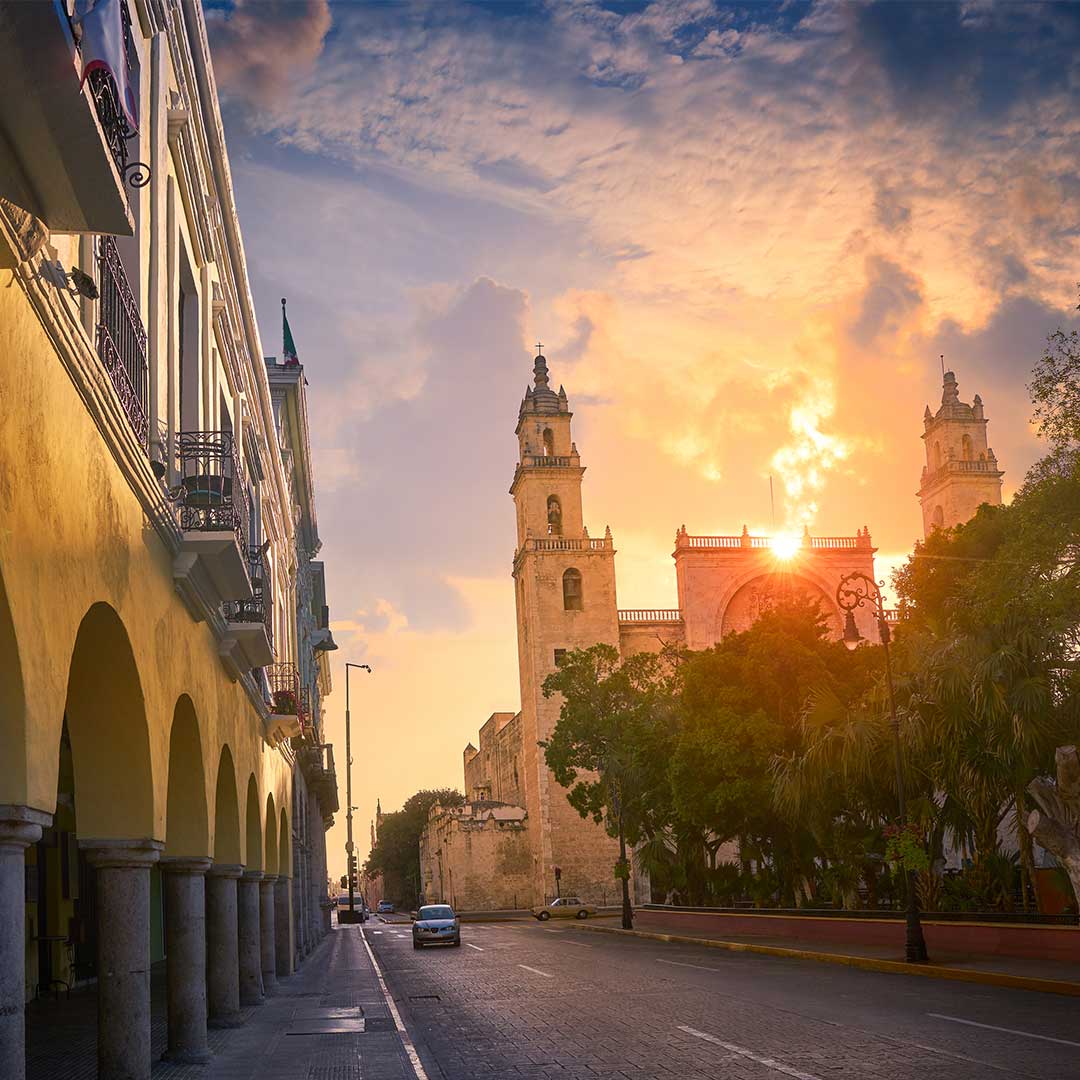
Visitors to the Mérida find its residents to be warm and hospitable. They speak a distinct Yucatecan dialect and are known for their cuisine, which differs from typical Mexican dishes due to its mixture of Mayan and Caribbean influences. This alone encourages you to visit if you’re a foodie. Other reasons include Mérida’s various historical sites and events. For instance, the Cathedral of Mérida is a prominent site, erected initially in 1598, whereas Paseo de Montejo is a famous avenue and an example of French and European influences. Meanwhile, events like the Mérida en Domingo frequently pull in locals and travelers due to the musical atmosphere, street performances, and traditional Yucatecan food. If you’re interested in areas outside Mérida, then the Celestún Biosphere Reserve is a popular spot. It allows visitors to observe flamingos in their natural habitat, among other wildlife.
A four to five-day itinerary is ideal for a trip to Mérida in 2024. Your budget will vary depending on your exact itinerary. October to March is the best time to visit as the weather is cooler and drier. Keep in mind that Mérida is hot and humid throughout the year, with April to July being the hottest month. Furthermore, expect to spend between $40 to over $100 per day due to fluctuating tourist prices. Transportation is largely hassle-free, as you’re able to navigate primarily by foot. However, there are buses, taxis, rental cars, and share-ride services available.
How to choose a place to visit?
The list below provides practical tips on how to choose a location to visit.
- Define your interests: Start by narrowing down what you enjoy about traveling and what you don’t. Many vacation destinations cater to different interests, offering history, food, relaxation, and more. However, every destination is unique, so it’s important to weigh your likes and dislikes objectively.
- Evaluate your budget: Coming up with a reasonable budget refines your choices. Keep in mind that traveling doesn’t need to come at a premium. Analyze your budget and determine how much you can comfortably spend, and whether more extravagant trips have less costly options.
- Assess your schedule: Consider the amount of time you have available, as well as the time of year you intend to travel. For instance, you may have an opening in your schedule during the summer, but this could mean peak temperatures. The duration of your stay will likewise impact your experience and types of the activities you can partake in.
- Consider your travel companions: Some locations are best experienced alone, while others should be shared with loved ones. Solo travel is ultimately cheaper, but you may find deals for hotels, tours, or similar targeting couples or families to help slash costs.
- Evaluate accessibility: Consider how easy it is to get to your chosen destination, including flight availability, visa requirements, and local transportation. Research available accommodations if you or someone you’re traveling with is disabled, and whether hotels or similar make substitutions if accommodations aren’t immediately available.
- Study the local culture: Familiarize yourself with the local customs, culture, and language. A destination more aligned with your comfort level in these areas is likely to enhance your experience.
- Check travel advisories: Before making a final decision, review any travel advisories. Not every location is safe. Moreover, there may be health risks, political situations, or other security information that might affect your trip.
What makes 2024 a good year for vacation?
2024 is a good year for vacations due to the continued recovery of the travel industry, broadening options, and shifting interests toward nontraditional locations. Analysis like the Skift Research Global Travel Outlook 2024 reports that revenue will stabilize after accelerating in 2023 and 2022. This indicates growth for the industry, with consumers partaking in diverse and flexible travel experiences. Additionally, there’s a growing appreciation for sustainable and responsible tourism. Top locations like Sumba, Indonesia reflect this as tourists are more concerned with their environmental impact. Likewise, unique offerings like the Trans Dinarica Cycle Route exemplify the desire for lesser-known destinations.
In short, 2024 is a great year to travel if you’re seeking authentic, crowd-free experiences that also support local communities. Moreover, we also believe that travel in 2024 is an opportunity to deepen your identity. You’ll have the chance to grow as an individual, build confidence, and develop a lifestyle that suits you as the travel industry provides more flexible, stable getaway options. That said, be mindful of industry trends and do research as expectations are likely to shift, even with projected stabilization.
Who should you travel with in 2024?
Traveling in 2024 should be done with people who align with your travel wants and goals. Trips are rewarding but often difficult to plan and execute. Consequently, it’s best to choose companions who share similar travel preferences to ensure a more harmonious journey. This may be friends, family members, or a significant other. Consider major factors like time, budget, flexibility, and major areas of interest. Some people enjoy tasting local cuisine more so than seeing historical sites, whereas others see travel as an opportunity to relax rather than explore. Additionally, consider going on a travel tour or cruise if you require new companionship. Doing so provides you with new social connections with similar interests—potentially leading to a compatible travel partner.
Is traveling alone a good idea?
Yes, traveling can be a good idea provided you take the proper precautions. This includes researching your destination, staying in safe accommodations, keeping emergency contacts handy, and respecting local customs and laws. These measures ensure your safety and enhance your travel experience. Furthermore, solo travel promotes various benefits. For instance, it instills confidence in your identity as an adventurer and encourages independence. It offers the unique opportunity to explore at your own pace, particularly if traveling with others isn’t enjoyable for you. You’ll also be able to meet new people, immerse yourself in different cultures, and step out of your comfort zone, untethered by travel companions.
What are the benefits of traveling?
The list below summarizes the main benefits of traveling.
- Cultural understanding: One of the main benefits of traveling is deepened cultural understanding. Visiting new places provides insight into different ways of life, customs, and traditions—which in turn allows you to appreciate diversity and the value of global perspectives and human connections.
- Personal growth: Travel often ignites personal growth due to the various opportunities it offers. It spurs independence, self-confidence, and resilience (be it as a solo traveler or with others) as you navigate new environments and experiences.
- Education and learning: Trips (particularly international ones) encourage education and learning. They’re a chance to develop language skills and become multilingual. This is crucial for connecting with others and better understanding cultures. You also learn a location’s history, art, language, and geography through firsthand experiences.
- Stress relief and relaxation: A major appeal of travel is relaxation. Spending time away from home allows you to escape daily routines and sources of stress. This promotes rejuvenation and recovery from burnout as you indulge in positive prospects.
- Connection and socialization: Another benefit of travel is new connections. Alongside a deepened cultural understanding, you’re likely to meet new people, interact with communities, and potentially form bonds. This applies even to travel companions as the experience may bring you closer to people who are already part of your life.
- Adventure and exploration: Travel sparks adventure, even if your trip is relatively local or short-term. New locations invite new activities and gratifying experiences. For instance, you might explore opportunities you can’t at home for the sake of adrenaline, such as surfing, bungee jumping, or backpacking.
What are the challenges of traveling?
Traveling presents various challenges, which the list below summarizes.
- Cost: The biggest challenge of traveling is cost. Different locations come with different price points, with highly popular or luxurious experiences being amongst the most expensive. This presents a major economic barrier and limits your options if you’re on a budget.
- Logistical issues: Logistical issues range from coordinating travel plans and accommodations to navigating unpredictable events, like canceled flights or illness. Working out logistics is important to your plans, but presents obstacles and becomes overwhelming if you frequently encounter roadblocks before or during your trip.
- Language barriers: Traveling encourages you to learn new languages, but this is often a difficult and lengthy task. You’re likely to encounter language barriers even if you have a working knowledge of the local dialect. This potentially leads to minor or significant misunderstandings that impede your trip.
- Culture shock: Adjusting to new customs, etiquette, and social norms disorient and challenge your perceptions. This isn’t necessarily a negative experience but it is still difficult if you’re not accustomed to a place.
- Health and safety concerns: Not every location is safe. Some risks may be limited to specific locations, such as a hotel where food and water safety may not be up to standard. Broader barriers, like illnesses and violence, are harder to avoid and must be properly addressed for your well-being.
- Travel fatigue: Depending on the duration and distance of your trip, fatigue is typical. Jet lag, rigid plans, and packed itineraries may become physically and mentally exhausting to manage, counteracting the relaxation trips typically promote.
- Homesickness: Trips inspire adventure and exploration, but this can wane over time. You might feel isolated or miss familiar comforts, especially if you’re gone for a long period.
What are some tips for traveling?
The following list covers practical tips for traveling.
- Plan ahead: The most important traveling measure is planning and research. Planning ensures a smoother journey, allowing for secured bookings, a concrete itinerary, and preparedness for local conditions and customs.
- Respect local customs: You’re likely to encounter major cultural differences, especially if you travel internationally. Consequently, it’s important to round out your research further by looking into local customs. Doing so avoids unintentional disrespect or misunderstandings, and fosters positive interactions.
- Pack wisely: Another benefit of research is understanding what to pack. Your destination determines the essentials you’ll need, from climate-appropriate attire to culturally sensitive-clothing and necessary gadgets.
- Stay flexible and safe: Trips often present unforeseen circumstances and potential dangers. Consequently, it’s important to adopt a flexible mindset. Be prepared to adjust your plans, follow local safety guidelines, and plan for emergencies.
- Stay connected: It’s important to notify loved ones before embarking on any trips. Update them on your plans and how to contact you in case of emergencies or vice versa. While navigating new locations, purchase local SIM cards or global roaming plans to access maps and translation apps, and keep in touch with loved ones.
- Try local cuisine: Research the local food scene and how to experience the culture more authentically. Doing so enriches your experience and allows you to discover new flavors and dishes.


2024.. travelling local and not far away seems more correct. Thats for mentioning it..